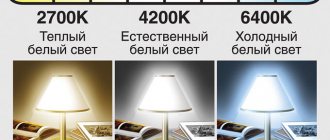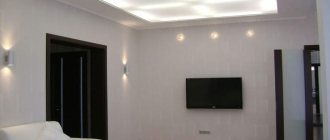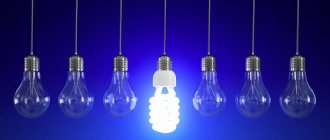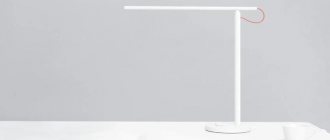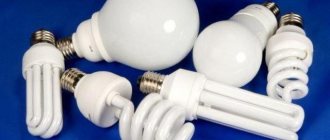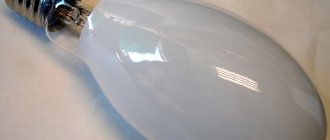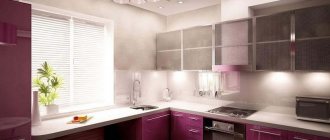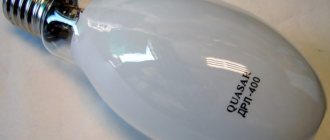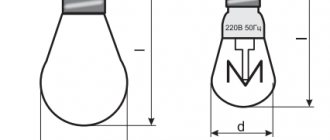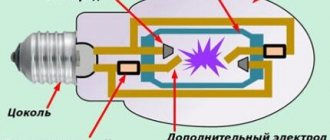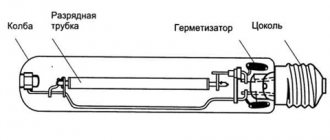Pet owners try to provide them with comfortable living conditions in a certain location. And if cats and dogs can move freely throughout the room, choosing the optimal place for themselves, then the same aquarium fish are forced to stay where their aquarium is located. In order for the inhabitants of an aquarium or terrarium to feel good in our climate, they need to create a certain temperature regime and type of lighting. Due to the fastidiousness of many aquarium inhabitants, aquarium lighting is selected in strict accordance with the standards and operating characteristics of lighting equipment.
Requirements and characteristics of aquarium lighting.
External lighting.
Plants need light for photosynthesis, and fish need it to form a life pattern. You should adhere to the following rules:
- protect the lamp with a waterproof casing;
- distribute light evenly throughout the volume of water;
- choose the right lamp power for specific flora and fauna;
- the lamp should produce a blue-violet and red-orange spectrum.
When choosing lamp power, you should consider the following important factors:
- type of fish and their habitat requirements;
- type of plants and their requirements;
- depth of the aquarium;
- water: sea or fresh;
- type of lighting in the room (artificial and natural);
- color and transparency of water.
It is quite difficult to take everything into account at once, so there are methods for calculating the required lighting power.
Selection of lighting.
Lighting distributions.
By volume.
The brightness of the light source can be too high or low and can harm the inhabitants of the aquarium. The lamp power can be selected according to the volume of water: approximately 0.1-0.3 W per 1 liter of clean water. In real conditions, it is difficult (and unnecessary) to keep water clean. Therefore, it is worth considering the type of fish and the number of plants that live inside. Recommended power values for incandescent and halogen lamps are given in Table 1.
Table 1.
| Lamp power, W/l | Type of plants and fish |
| 0,2-0,4 | For heat-loving, nocturnal fish, catfish. Plants that are little dependent on light. |
| 0,4-0,5 | Average value. Suitable for a variety of fish and small quantities of all plants. |
| 0,5-0,8 | For decorative aquarium plants. |
| 0,8-1 | For a large number of plants; for plants that grow in soil. |
For an average value of 0.5 W/l, Table 2 shows the lamp powers and their number depending on the volume.
Table 2.
| Aquarium volume, l | Lamp power, W | Number of lamps, pcs |
| 25 | 8 | 1 |
| 50 | 15 | 1 |
| 60 | 15 | 1 |
| 130 | 18 | 2 |
| 220 | 30 | 4 |
| 310 | 38 | 4 |
| 350 | 36 | 4 |
| 400 | 36 | 4 |
In depth.
You can choose the power for the light source based on the turbidity of the water. In a medium-transparent liquid, the brightness of light decreases by half every ten centimeters. For example, with an aquarium depth of fifty centimeters, only a quarter of the light reaches the bottom.
To maintain a healthy aquarium flora, the power of the lamps should be calculated so that the luminous flux at the bottom is over 60 lm. And the illumination value on the surface is recommended to be maintained in the range from 13 thousand lux to 18 thousand.
Despite all the mathematical calculations and calculations, the main indicator of the right light source will be the beautiful and healthy inhabitants of the aquarium. They themselves will tell you if the lighting is chosen incorrectly.
- when there is too much light, the water blooms, algae grows, and the walls of the aquarium turn green;
- If there is a deficiency, small plants die, brown spots appear, and fish lack oxygen.
Location of the backlight.
Illumination at high altitude.
It is important not only to calculate, but also to correctly place the light source. The best option is a lamp from above. There are two options for this arrangement: open and closed. The first type of lamp hangs above the aquarium. The second lamp is mounted in the lid of the container. The second option is cheaper and easier to use.
Reflectors are installed to distribute light evenly. This allows you to illuminate the most difficult to reach corners of the aquarium.
If, however, the bottom of the aquarium is in the shade, then you can install additional submersible lamps along the walls or on the bottom. The same technique is used as decorative lighting in the water column.
Keep in mind that a light bulb placed above water may generate excessive heat. To avoid overheating, you should move the lighting fixture higher or place a cooling cooler in the water.
Types of lamps for an aquarium.
Blue light source.
Fluorescent lamps [LL].
The lamp consumes little electricity and produces a good luminous flux. In addition, LLs are relatively inexpensive, heat up little and provide diffused light, which is suitable for most aquariums.
However, such a lamp must be connected through a special choke. This device is noisy and can harm fish. In addition, fluorescent light sources will have to be replaced once a year. This is due to the design of the LL: the phosphor layer that covers the inside of the flask quickly wears out and becomes unsuitable for flora and fauna. Lamps should be replaced one at a time, not all at once.
There are several types of LL that should be used for an aquarium. This is indicated on the packaging in the color designation: /xx. Xx are the following numbers:
- /03 – luminous flux suitable for light-sensitive plants (corals) and marine aquariums;
- /05 or /89 – light with a predominant blue tint (suitable for reefs);
- /79 – light with a predominance of red;
- /77 – universal aquarium light source;
- /54 – daylight;
- /35 – white light.
The type of glow is also indicated on the packaging: NO, HO and VBO. NO is suitable for small aquariums with a depth of no more than 50 cm. HO and VBO are more powerful.
Standard LLs of different diameters are available:
- 16 mm – “T5”;
- 26 mm – “T8”;
- 28 mm - “T12”.
The T8 aquarium lamp represents good value for money. T5 is more compact with a higher luminous flux (NO). But it requires a special throttle, so replacing one diameter with another will not work.
There are LLs with different bases. The so-called housekeeper has a standard base (E14 or E27) and a spiral-shaped flask. And the compact lamp is equipped with a special g13 socket, which is suitable for aquarium lamps.
LED lamps.
This is the most economical option: power consumption is low and service life is long. In addition, high-quality LED light sources heat up little, do not flicker, and shine evenly (reflectors are not needed). Light can penetrate to great depths. They are suitable for both sea and fresh water. When using LED strips, you can create a variety of decorative lighting modes. (However, this is a lot of stress for fish).
The negative aspects of using LEDs include the cost and lack of understanding of the effect of such light on flora and fauna.
You can study LED lamps in detail in the article: “How does an LED lamp work?”
Metal halogen lamps.
They are successfully used to illuminate aquariums above 60 centimeters in height. Metal-halogen light sources have a number of advantages: low cost, relatively low energy consumption, directional luminous flux, different color temperatures, small size, light is well perceived by fish.
The main disadvantage is strong heating. Therefore, they must be mounted at a distance from water (at least thirty centimeters) and turned off after two hours of operation to cool down. However, the lamp can be equipped with a fan, then you won’t have to turn it off. You should also put glass between the water and the lamp.
Incandescent light bulbs.
They, like halogen ones, are used less and less. Their main disadvantage is high heating and high energy consumption. Among the advantages, it is worth noting the low cost and the light spectrum as close as possible to the sun.
Blue lamp for an aquarium.
They are used to create the effect of the deep sea in the water column.
The use of such light sources depends on the type of fish that live in the aquarium. Blue light is “natural” for deep-sea and bottom-dwelling fish. For other marine and freshwater inhabitants, the blue spectrum causes discomfort. Therefore, it is recommended to use a blue lamp only in combination with a white one. Or to highlight certain areas of the aquarium. It is also worth keeping in mind that the blue, or more precisely blue-violet, spectrum helps the growth of plants in the aquarium.
Ultraviolet lamps also emit blue light. With their help, you can disinfect water from viruses and bacteria and reduce water turbidity. In addition, there are fish and plants that respond favorably to ultraviolet radiation and develop well in it. In addition, under ultraviolet light, many fish reflect a beautiful fluorescent light. But the light output of ultraviolet lamps is small, so it should only be used as local illumination.
Popular models
Phytolamps optimize vegetative processes and raise water temperature. The most popular lamps for aquariums:
- Sylvania GRO-Lux. An excellent option with a predominance of red and blue spectrums. This type of lamp is installed when there is little daylight. Light rays activate photosynthesis in plants.
- OSRAM T8 FLUORA. Fits well into large bodies of water. Provides high-quality plant vegetation. There is no danger of overheating of the aquatic environment. The blue and red spectra are dominant. However, it is rarely found on sale.
- HAGEN FLORA GLO. Fixed on the back of the panel. Fluorescent type of lighting that guarantees active photosynthesis. According to the manufacturers, it lasts 9000 hours. Doesn't raise water temperature. Suitable for terrariums. The power is low, so installation is only possible in small reservoirs.
- JBL SOLAR ULTRA MARIN DAY. Chosen by lovers of marine aquariums. The light output is huge. Gives off a white glow. Coral reefs look great with this amount of light. Creates a microclimate for the existence of invertebrates. Finding it in pet stores is not difficult. The price is considerable.
- T5 HAILEA EXSTRA REEF. The luminescent flux for underwater panoramas emphasizes the beauty of the seascape. Blue and cyan spectra predominate. Suitable for life support of unicellular organisms. Emits white backlight. Makes the color of aquatic inhabitants prominent and bright.
- HAGEN SUN GLO. Soft light emission for freshwater bodies with imitation of daylight. Installed in aquariums with plants that do not require lighting. Fish with bright colors will look beautiful.
To avoid harm to aquatic life, choose lighting fixtures for aquariums from reliable manufacturers. When purchasing lighting equipment, it is better to contact specialized stores.
Combined lighting.
According to aquarists, the most effective lighting is provided by using different types of light sources. The main task when mixing remains to obtain a spectrum as close as possible to the solar one. When selecting light bulbs, it is necessary to take into account the color temperature.
Most often, the combination is based on fluorescent lamps. LED or metal halogen light sources are added to the LL. There is a combination of three lamps: LL, metal halogen and LED.
Light spectrum.
Colorful temperature.
In a natural body of water, the sun's rays lose part of their spectrum when passing through the water column. The red and orange part is absorbed in the first five meters. After nine meters the yellow spectrum is lost. An aquarium of such depth can only be found in an aquarium. In most aquariums, the light reaches the bottom in the full spectrum.
Experts advise using lamps with a color temperature above 5000 K (blue-violet spectrum). This will create good color rendition in the water and allow plants to develop better.
No lamp can completely replace sunlight. Fluorescent lamps are as close to the “ideal” as possible. Especially their newest type: phytolamps.
Warm or cool light
Only natural sunlight has a neutral color. In turn, the lamps will flash a certain color, which depends on the spectral characteristics. In this regard, the concepts of “warm” and “cold” light were introduced.
- “Warm” light (1000-5000 K) . Lamps of any type can have this spectrum. Has a yellowish or reddish tint. Enhances the color of the aquarium parts and the fish themselves with warm tones and, conversely, mutes cold tones and distorts the color rendition of green and blue.
- “ Cold” light (6000-10000 K). In cool lighting, bluish tints predominate. Helps to emphasize the aquarium and distinguish it from other interior details. Creates the effect of depth. “Cold” light can be produced by incandescent lamps with colored bulbs, fluorescent, metal halide and diode lamps.
- Intense blue light (more than 10,000 K). Lighting with a spectral temperature of more than 10,000 K can be provided by metal halide and diode devices. They are usually used for deep sea aquariums. Not very suitable for herbalists, because... In this light, the plants look artificial.
Typically, for an aquarium with fish, a lamp is chosen in the spectrum from 5,500K to 20,000K, for a herbalist - from 6,500 to 8,000 K (with warmer light, plants look yellow and unhealthy), for reefs - from 9,000K to 20,000 K. Light The temperature is usually indicated on the packaging of the light bulb. You can't find this information unless you look at incandescent lamps, which in most cases produce warm light.
Long-term illumination of the aquarium.
Outdoor Lighting.
The operating time of the light sources depends on the type of fish living in the aquarium. It is necessary to create conditions close to their habitat. However, most aquarium fish come from the sunny tropics. Daylight hours all year round there last half a day: 12 hours. Therefore, the aquarium needs to be illuminated for at least 8-10 hours a day. Turn lamps on and off according to a schedule.
Control is simplified by placing the aquarium on the sunny side of the room: it is enough to turn on the backlight shortly before dusk. If the room is dark, then the lamps should work all day.
When organizing the light regime, you should adhere to the natural solar cycle. At noon, when the sun is at its zenith, the most intense lighting is needed for 3-4 hours. And in the mornings and evenings the light can be softer and subdued. To create such effects, different controllers are used.
Backlight location
According to many experienced aquarists, the best lighting effect is created by installing a light source from above. You can attach the lamp directly to the lid of the aquarium, or position the unit at the front or side of the tank.
The light source must uniformly illuminate the water space, including covering the bottom area. If the lower part of the aquarium remains in the shade, it is necessary to replace the lamp with a more powerful one. This problem can also be solved by equipping the aquarium with additional lights, placing them on the upper side walls.
Options for controlling daylight hours.
Daylight control using instruments on the bottom panel.
To create the optimal light mode, you will need several lamps, each of which is regulated by a separate toggle switch.
For ease of use, you can automate the process of turning the backlight on and off. It is enough to build a temporary relay or timer into the circuit and program it.
A timer is the simplest control device. There are timers that are designed to work in an aquarium. You just need to install them and set the desired time to turn the lighting on and off. The advantage of the timer is that it works in real time. If you need to turn on the aquarium at 7-25, then this is the number you dial on the device.
Relays do not have this function. The control is set logically: the process will begin after the required time interval. (For example, turn on the light after 8 hours, and turn off after 10). But when there is a voltage drop in the network, the relay program does not get lost. Devices are divided into mechanical and electronic. In the latter case, the lighting intensity is programmed.
Control devices can be installed on an outlet or in a panel. The first method is cheaper and simpler. The second is possible only at the stage of laying the wiring; this reduces the number of wires.
Common mistakes.
The brown color of the grass indicates a lack of light.
- You should not increase the operating time of lamps when their power is low. This will cause the water to bloom.
- Low color temperature of the light source leads to active growth of algae.
- Any excess is harmful: both too high light intensity and too low. In both cases, diseases of fish and plants and impaired photosynthesis are possible.
- Inconsistency between light conditions and the habitat of fish and plants.
- Incorrect placement of plants in the volume of water in height (for example, placing bottom plants on top).
Device
According to the design, lighting can be provided by one long lamp or a set of several point lighting sources. The parameters for their placement are selected based on the consideration of optimal coverage of the entire area and volume of the artificial reservoir.
Aquarium lighting can have different installation positions in relation to the water tank. According to the method of placement, there are two main methods - built-in and external. Built-in ones, as a rule, are located along the walls of the aquarium in a horizontal or vertical plane. When diving, use special waterproof lamps or classic lighting elements placed in sealed tubes. A slight distance from the aquarium lighting devices is used to remove excess heat, and in some models elements for forced heat removal can be installed.
Favorable lighting for plants in the aquarium.
Herbaceous aquarium.
Plants absorb light to initiate the process of photosynthesis, without which their growth is impossible. The intensity of development depends on the presence of blue-violet and red-orange parts in the spectrum.
Depending on the type, plants require different amounts of light. With the help of reflectors, you can focus light flows in those parts of the aquarium where brighter lighting is needed. At the same time, fish that do not need as much light can hide in shady places or under the wide leaves of plants.
It is worth considering the height of the aquarium. It is better to plant plants that do not require light in high containers at the bottom.
Like most fish, much of the flora comes from the tropics. Therefore, they need a long daylight hours: 8-12 hours.
Choosing a location for installing lamps
Depending on the location of the aquarium lighting devices, they can be installed at the bottom, in the central part, on the side or on top. The most optimal option is the overhead installation of artificial lighting sources. If the type of lighting equipment does not provide for directional radiation of the flow, a reflector is placed around it.
Rice. 7: distribution of light flux throughout the aquarium
The choice of a specific location depends only on your personal preferences and the arrangement of interior items in the room.
If one lighting element is not enough, then combined options or several lamps are used to achieve the required lighting brightness. To do this, you can use two or even three types of lamps, which allow you to create interesting effects.
DIY aquarium lighting.
The easiest option for creating lighting yourself is to use a household lamp. For it you need to make a lampshade, reflectors and figure out how to attach it to the aquarium. When choosing a lamp, make sure that the base matches the base of the lamp you will use.
How to make a LED lamp for a marine aquarium is discussed in detail in the video:
You can also make the backlight in the form of an LED strip. To do this you will need: led tape, a plastic cylindrical flask of the required length, a 220V or 12V power supply, a soldering iron, an awl, silicone, pieces of foam rubber, a two-core wire and connectors for connecting the tape to the power supply.
DIY light source.
- Use an awl to make a hole for the wire in the lid of the flask.
- Solder a wire to the LED strip. On the other side, attach the wire to the connector using clamping screws.
- Glue pieces of foam rubber to the back of the LED strip. This is necessary so that the tape does not dangle in the flask, but is fixed.
- Place the tape in the flask. Seal the joints with silicone.
- Connect to a power source and check operation.
